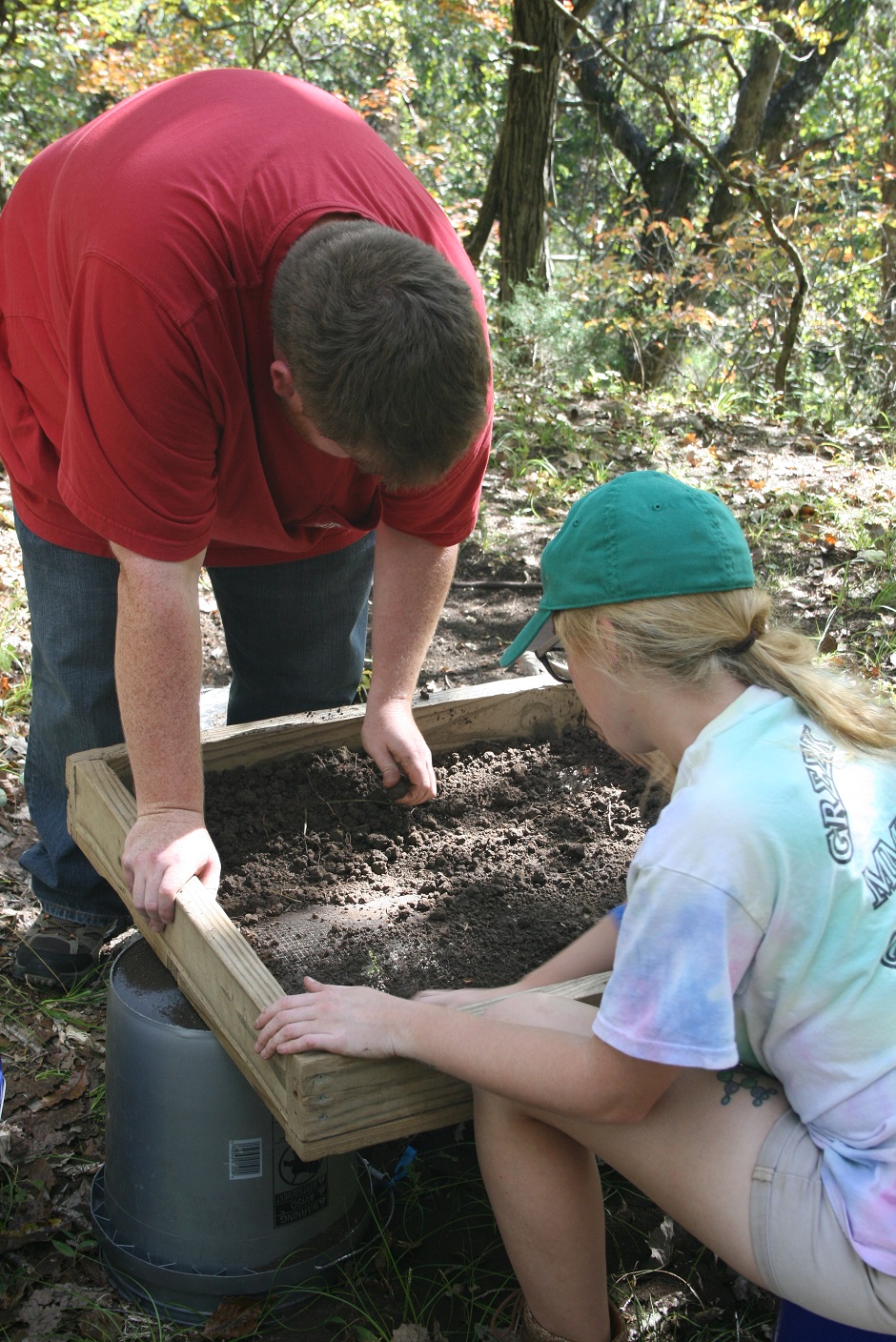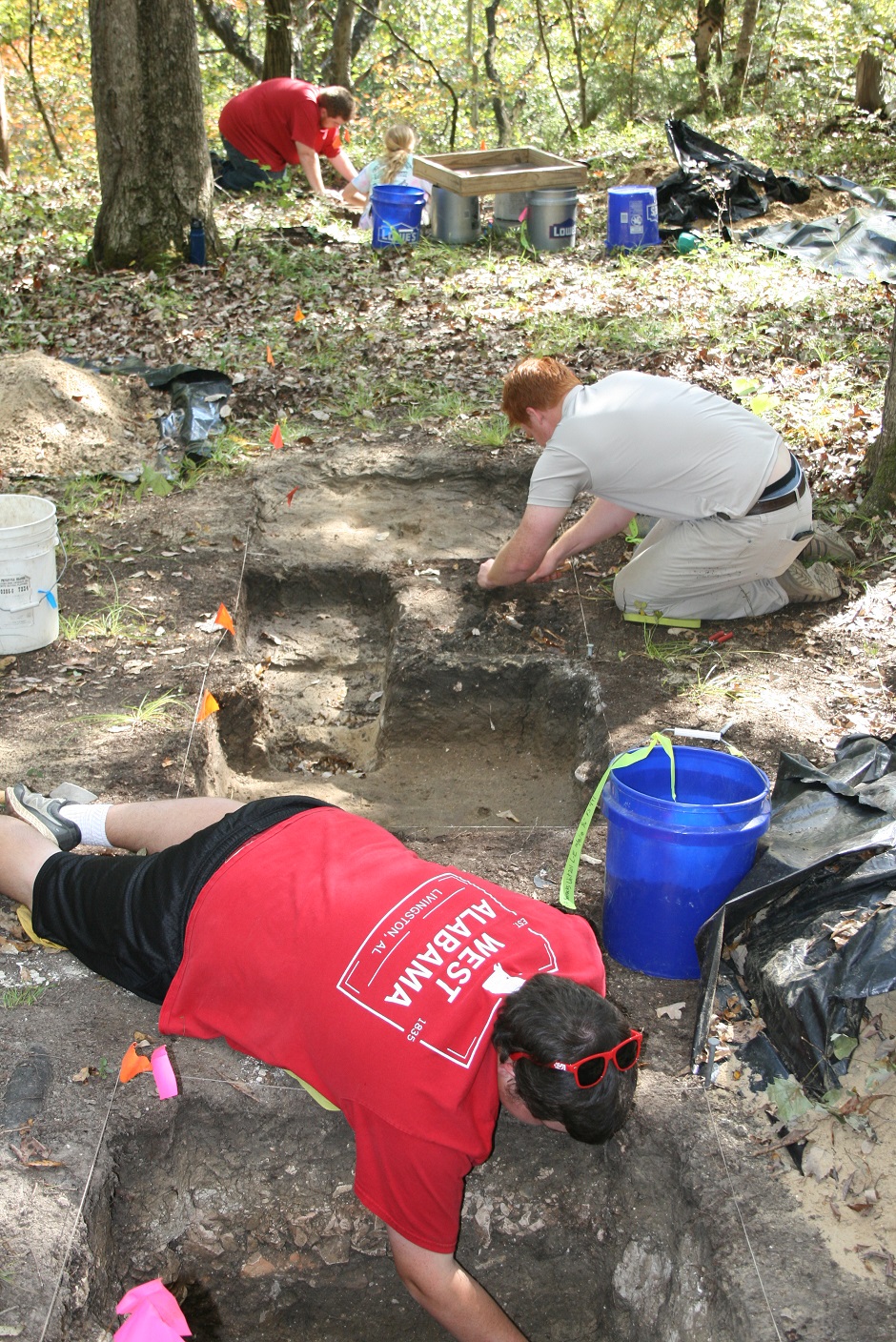Field
blog for October 30th and November 1st
By Daniel
Rhodes
Sarah
and I have been working in/on our Unit 212 for about a week now. Instead of
using a shovel and getting through multiple layers of earth at a time, we use
trowels and scrape the dirt away inch by inch, which is a lot more frustrating
but also a lot more precise. We are also going to map the location of each artifact
as we uncover them. Their positions in the ground may turn out to be patterned.
For example, a bunch of nails in a line could mean that a wall was once there. Dr.
Dumas chose this area because students in other field school classes had a lot
of success in finding artifacts in the area, part of a trench, and also because
it is behind where the barracks of the fort were located when the fort was
occupied and operational. The artifacts in this area may be every-day sorts of
items that were thrown or swept out the back doors of barracks. They could give
us a lot of insight into how the soldiers lived.
Here is a photo of Sarah and I screening:

Michael and Sparky each had a unit to work on, I think they made more progress than we did because they were digging in areas that other students had already started in previous field schools. Most of what we were digging was on the surface. We spent the entire class time just scraping away inch after inch of dirt and really the only thing we found were roots (and a new appreciation for shovels, of course.) Below is a photo of all of us at work in our units, which cut across perpendicularly where the barracks building once sat.

November 1st
It had severely rained here over the past two days so we decided not to go out to the fort, instead Dr. Dumas showed us a device that Archaeologists use for marking off and creating digital maps of sites and areas for later review in labs. She showed us how to use and calibrate (I think that is the correct term) the Total Station then she left us to each take turns and learn how to use it. One person sets up the laser-shooting transit and the other holds up a pole with a prism in it to create a line covering the distance between them. It was really cool; I’ve never used anything like it before so it was tough to set up because the device has to be exactly level. It also has to be incredibly precise, like even being a half inch out of line can mess up the measurements.